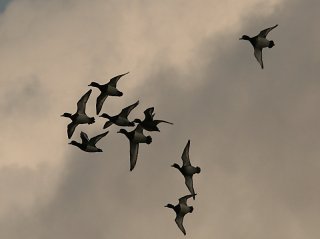Forests resound with farewell songs of migrating birds
The middle of October is a time when nearly all birds nesting in Latvia have left for warmer regions. However, it is also a time when the migration process is the most visible and audible, and the skies resound with the voices of the symbolic autumn migrants – geese and cranes.
If you listen really carefully, you will hear the flocks of wild geese crossing Latvia both by day and during the night-time hours! The noisy cranes flock the skies more seldom. Small groups of cranes or even larger flocks can also be spotted resting and feeding on the ground. Cranberry enthusiasts should be aware that there is no need to gather the entire harvest in swamps. Some berries should be left for cranes that will return next spring. It is noteworthy that cranes participate in spreading cranberries: after passing through the digestive system of cranes, cranberry seeds become ripe for sprouting.
Small migratory birds are also nothing out of the ordinary during this period. Some of them are not afraid of humans at all, which is due to the fact that they hatched far away from populated areas. There are also quite many migrating water birds. The number of wild pigeons has also noticeably increased. Some birds of prey – predominantly buzzards and sparrow-hawks – can be observed as well.
However, amphibians and reptiles can no longer be seen unless particularly sought after. They have descended to their wintering spots or stick close to them.
Even though most invertebrates are no longer around, the most successful mushroom-pickers can still find snails feeding under mushrooms. Click beetle and fungus gnat larvae, incorrectly perceived as mushroom worms, are still living in mushrooms, and adult forest dung beetles continue to chew off chunks of mushroom fruiting bodies.



